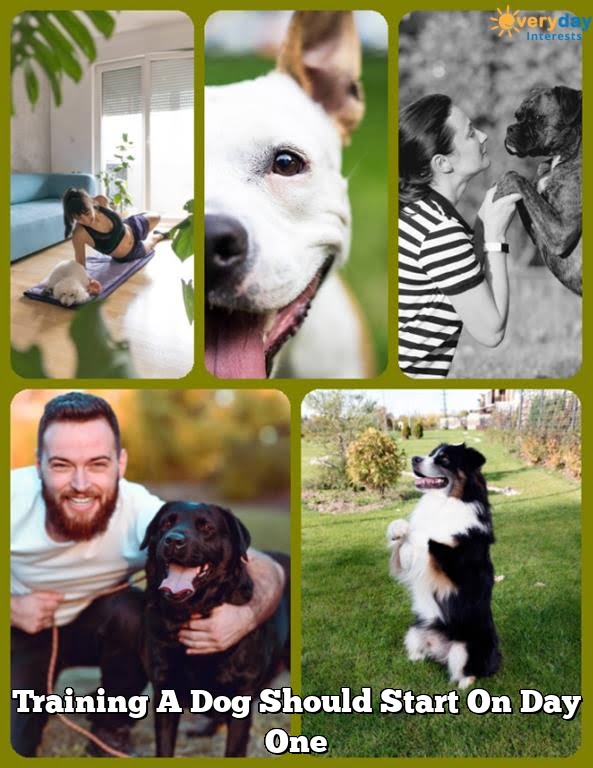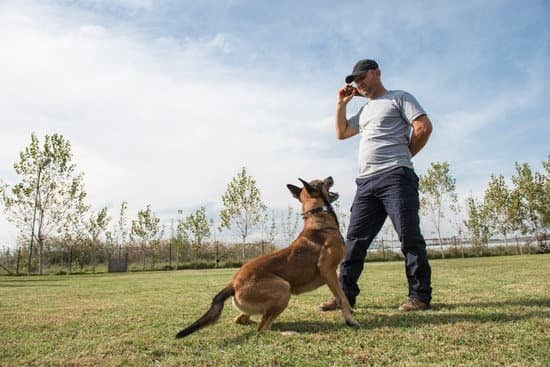Are you considering training your dog, but feeling unsure of where to begin? “How do I start training my dog?” is a common question for many new pet owners. Whether you have a young pup or an older dog, the process of training can be both rewarding and challenging. It’s important to approach this task with patience, dedication, and the right knowledge.
Before diving into training your furry friend, it’s crucial to understand the basics. This means familiarizing yourself with your dog’s breed characteristics, temperament, and learning style. Each dog is unique, so tailoring your training approach to suit your specific pet is key to success. In addition, establishing a strong bond built on trust and communication lays the foundation for effective training.
Once you have a good grasp of the fundamentals, it’s time to consider the best method for training your dog based on their personality. Some dogs respond well to positive reinforcement techniques, while others may need a more structured approach. Understanding what works best for your canine companion will help pave the way for successful training sessions.
When starting out with basic commands such as sit, stay, come, and heel, consistency and patience are crucial aspects of successful training sessions. It’s important to keep in mind that different dogs learn at different paces. Finding the right balance between gentle guidance and firmness yields positive results in teaching these essential commands. Remember that building a strong foundation early on sets the stage for more advanced training techniques down the line.
As you embark on this journey with your dog, it’s important to keep an open mind and remain flexible in your approach. While some behavioral issues may arise during the training process, addressing them with understanding and positivity will reinforce a trusting relationship between you and your pet. Keep these key points in mind as you begin the exciting adventure of training your beloved canine companion.
Choosing the Right Training Method for Your Dog’s Personality
When it comes to training your dog, it is important to consider their personality and temperament in order to choose the right training method. Different dogs respond to different training techniques, so understanding your dog’s personality is crucial in order to effectively train them. Here are some key factors to keep in mind when choosing the right training method for your furry friend:
- Assessing Your Dog’s Personality: Before you begin any type of training, take the time to observe and understand your dog’s behavior, energy level, and response to different stimuli. This will help you determine whether your dog is more food-motivated, play-driven, or praise-oriented.
- Positive Reinforcement: Many dogs respond well to positive reinforcement training methods, which involve rewarding good behavior with treats, toys, or verbal praise. This approach can be particularly effective for dogs that are eager to please and enjoy learning new things.
- Understanding Training Techniques: There are various training techniques such as clicker training, obedience training, and crate training. Each has its own benefits and challenges depending on your dog’s personality and learning style.
Ultimately, choosing the right training method for your dog’s personality is essential in order to build a strong foundation for successful training. By taking the time to assess your dog’s individual needs and preferences, you can tailor your approach to ensure that they are engaged and motivated throughout the training process.
Remember that patience and consistency are key when it comes to finding the right method for your dog – don’t get discouraged if one technique doesn’t work out. It may take some trial and error before finding the perfect fit for your furry companion.
Establishing Trust and Bonding With Your Dog
Building trust and bonding with your dog is essential before you begin any training. This foundation will help create a strong relationship between you and your pet, making the training process smoother and more effective. One of the first steps in establishing trust is to spend quality time with your dog. Whether it’s going for daily walks, playing games, or simply sitting together, these activities help your dog feel secure and connected to you.
Another important aspect of building trust is to be consistent in your interactions with your dog. Dogs thrive on routine, so having a regular feeding and exercise schedule can make them feel safe and secure. Additionally, be mindful of your body language and tone of voice when interacting with your dog. Using positive body language and a calm, reassuring tone helps build trust and strengthens the bond between you and your pet.
Furthermore, considering the individual personality of your dog is crucial for establishing trust. Some dogs may be more reserved or cautious, while others may be more outgoing and affectionate. Understanding their unique temperament allows you to tailor your interactions in a way that makes them feel comfortable and valued. By taking the time to establish trust and bonding with your dog before beginning training, you set the stage for a successful learning experience for both you and your pet.
| Activity | Benefit |
|---|---|
| Daily walks | Builds connection |
| Consistent interaction | Makes dog feel safe |
| Tailoring interactions | Creates comfort |
Basic Commands
When it comes to training your dog, teaching basic commands such as sit, stay, come, and heel is essential for establishing good behavior and communication. These commands serve as the foundation for more advanced training and can help keep your dog safe in various situations. Here are some tips for effectively teaching these basic commands to your furry friend.
Understanding Each Command
Before you start training your dog on these basic commands, it’s important to understand what each one means and how it benefits both you and your dog. “Sit” teaches your dog self-control and can be used in various situations, such as before mealtime or when greeting guests. “Stay” helps keep your dog safe by preventing them from running into dangerous situations.
“Come” is crucial for calling your dog back to you, especially in off-leash areas. Lastly, “heel” teaches your dog to walk politely beside you without pulling on the leash.
Training Tips
When teaching these commands, consistency is key. Use the same verbal cues and hand signals each time you give a command to avoid confusing your dog. Start with short training sessions multiple times a day, using positive reinforcement such as treats or praise when your dog successfully performs the command. Also, be patient with your furry companion; some dogs may pick up these commands quickly while others may take longer to grasp them.
Troubleshooting
If your dog struggles with any of these basic commands, don’t get discouraged. Address any issues by revisiting the basics of training and ensuring that you are using clear and consistent cues. If problems persist, seek guidance from a professional trainer who can provide personalized advice and techniques for overcoming challenges in teaching these essential commands.
Positive Reinforcement vs Punishment
When it comes to training your dog, the use of positive reinforcement or punishment is a topic of much debate among pet owners and trainers. Positive reinforcement involves rewarding your dog for good behavior, while punishment focuses on correcting unwanted behavior through reprimands or physical discipline.
Numerous studies have shown that positive reinforcement is more effective than punishment when it comes to training animals, including dogs. When you reward your dog for exhibiting the desired behavior, they are more likely to repeat that behavior in the future. This creates a positive association with the action and strengthens the bond between you and your pet.
On the other hand, using punishment as a training method can lead to fear, anxiety, and even aggression in dogs. This can ultimately damage the relationship between you and your pet, making training less effective and causing undue stress for both parties.
It’s important to note that while positive reinforcement is typically more effective than punishment, every dog is unique. Some may respond better to one method over the other based on their personality and past experiences. It’s crucial to observe how your dog responds to different training techniques and adjust your approach accordingly.
| Training Method | Effectiveness |
|---|---|
| Positive Reinforcement | More effective in creating lasting behavior change |
| Punishment | Can lead to negative side effects such as fear and aggression |
Consistency and Patience
It’s also crucial to exercise patience throughout the training process. Dogs, like humans, require time to learn and understand new concepts. Some dogs may pick up commands quickly, while others may take more time to grasp the same concepts. As their trainer, it’s important to remain patient and understanding during this learning process. Getting frustrated or losing your temper can have negative effects on your dog’s willingness to learn and obey commands.
Consistency and patience also go hand-in-hand when it comes to addressing behavioral issues. Whether you’re working on potty training or curbing excessive barking, it’s important to consistently reinforce the desired behavior while remaining patient with any setbacks or mistakes.
Using positive reinforcement techniques can help encourage good behavior while avoiding punishment-based methods that can create fear or anxiety in your dog. By consistently applying these principles and exercising patience, you’ll set the stage for successful training outcomes with your canine companion.
Addressing Common Behavioral Issues
Training your dog is not just about teaching them basic commands; it also involves addressing common behavioral issues that may arise. One common issue that many dog owners face is excessive barking. Dogs bark for various reasons, including boredom, anxiety, or the need for attention.
It’s important to understand the root cause of your dog’s barking in order to address it effectively. Another common behavioral issue is leash pulling during walks. This can be frustrating for both the owner and the dog, but with proper training and consistency, this behavior can be corrected.
Aggression towards other dogs or humans is another challenging behavioral issue that some dog owners may encounter. It’s crucial to address this behavior early on and seek professional help if necessary to ensure the safety of both your dog and others. Separation anxiety is also a common issue among dogs, leading to destructive behavior when left alone. Training methods such as desensitization and counter-conditioning can help with this problem.
It’s important to remember that addressing behavioral issues requires patience, consistency, and understanding of your dog’s needs and triggers. By approaching these issues with a calm and positive mindset, you can work towards modifying your dog’s behavior effectively.
Advanced Training Techniques
Once your dog has mastered the basic commands and is responding well to positive reinforcement, you may want to consider advanced training techniques to keep them mentally and physically stimulated. Advanced training can also help build a stronger bond between you and your furry friend. Here are some advanced training techniques to consider:
- Agility Training: This type of training involves navigating an obstacle course with tunnels, jumps, weave poles, and more. It not only provides physical exercise but also challenges your dog’s problem-solving skills.
- Trick Training: Teaching your dog fun tricks like rolling over, playing dead, or even dancing can be a great way to bond with your pet and show off their intelligence.
- Scent Work: Dogs have an incredible sense of smell, and scent work allows them to use that natural ability. You can teach your dog to find hidden treats or objects based on their scent.
When introducing these advanced training techniques, it’s important to remember that patience and consistency are still key. Celebrate small victories, and always use positive reinforcement to encourage your dog’s progress.
Remember that not all dogs will enjoy or excel at every advanced training technique. It’s important to observe your dog’s reactions and adjust the training accordingly. As always, make sure that the training sessions are enjoyable for both you and your canine companion.
The Importance of Socialization for Your Dog
Socialization is a crucial aspect of training for your dog’s overall well-being and behavior. It involves exposing your dog to different people, animals, environments, and experiences in a positive and controlled manner. This helps them become more comfortable and confident in different situations, reducing the likelihood of fear or aggression towards new stimuli.
Why Is Socialization Important?
Proper socialization helps prevent behavioral problems such as fear, anxiety, and aggression. It also ensures that your dog will be well-behaved and relaxed in various settings, including public places, around other pets, and with unfamiliar people. Dogs that are not adequately socialized may develop phobias or exhibit aggressive behavior when encountering new situations.
How to Socialize Your Dog
The key is to start socializing your dog from a young age through positive exposure to a wide variety of people, animals, sounds, and environments. Introduce them to different experiences gradually while monitoring their reactions. Use treats and praise to create positive associations with new encounters. It’s important not to overwhelm your dog but rather make each socialization experience enjoyable and rewarding.
By understanding the importance of socialization for your dog’s development and using positive reinforcement techniques during the process, you can help ensure that your furry friend grows into a well-adjusted and friendly companion.
Seeking Professional Help
In conclusion, training your dog can be a rewarding and fulfilling experience for both you and your furry companion. However, there may come a time when you find yourself struggling to make progress or facing behavioral issues that seem beyond your expertise. This is when it may be necessary to seek professional help from a qualified dog trainer.
Knowing when to consult a trainer is essential in ensuring the well-being and successful training of your dog. It’s important to recognize that some behavioral issues or training challenges may require the knowledge and skills of a professional. Whether it’s aggression, severe anxiety, or complex obedience problems, a trainer can provide guidance and support to address these issues effectively.
Additionally, consulting a trainer can be beneficial if you feel overwhelmed or unsure about the best approach to train your dog. A professional can offer personalized training plans tailored to your dog’s specific needs and personality, making the training process more effective and less stressful for both you and your pet.
Remember that seeking help from a trainer is not a sign of failure but rather a proactive step towards ensuring the happiness and well-being of your canine companion.
Ultimately, understanding the importance of seeking professional help when necessary can make all the difference in achieving successful training outcomes for your dog. By being open to the idea of consulting a trainer when needed, you are demonstrating commitment to providing the best possible care and guidance for your beloved pet.
So, if you find yourself struggling with training or facing challenging behaviors, don’t hesitate to reach out to a qualified dog trainer who can provide the expertise and support needed to help both you and your dog succeed.
Frequently Asked Questions
How Do You Train a Dog for Beginners?
Training a dog for beginners involves establishing clear communication, consistency, and positive reinforcement. Start with basic commands like sit, stay, and come, using treats and praise to reward the desired behavior.
Gradually introduce more advanced training techniques as the dog becomes comfortable with the basics. It’s also important to be patient and understanding, as training takes time and effort from both the owner and the dog.
What Are the 5 Golden Rules of Dog Training?
The 5 golden rules of dog training involve being consistent, using positive reinforcement, keeping training sessions short and fun, focusing on one command at a time, and being patient with your dog’s progress. Consistency helps your dog understand what is expected of them, while positive reinforcement encourages good behavior.
Keeping lessons short ensures that your dog stays engaged and doesn’t become overwhelmed or bored.
What Is the Fastest Way to Train a Dog?
The fastest way to train a dog is through positive reinforcement and consistency. Use small treats to reward good behavior immediately after it occurs, so your dog can make the connection between their actions and the reward.
Additionally, keeping training sessions short but frequent will help reinforce learning without overwhelming your dog. Remember that patience is key – rushing through training can lead to confusion or frustration for both you and your pet.

Welcome to the blog! I am a professional dog trainer and have been working with dogs for many years. In this blog, I will be discussing various topics related to dog training, including tips, tricks, and advice. I hope you find this information helpful and informative. Thanks for reading!





